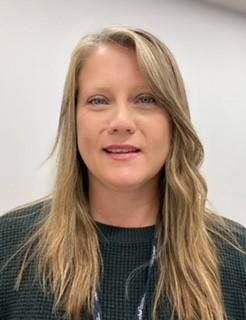Meet Joy Boyce, Occupational Therapist with the Early Supported Stroke Discharge program

1. Describe your program/service and the patients you serve.
I am a part of the newly formed Early Supported Stroke Discharge (ESD) team. It is the first program of its kind in Nova Scotia and Atlantic Canada. The ESD team concept is well established in the Canadian Stroke Best Practices. I am the coordinator of the ESD team and before this I worked as an OT in stroke rehabilitation for 16 years.
It is exciting to establish an ESD program in the Central Zone. We are an interdisciplinary team comprised of a coordinator, two Occupational Therapists (OT), two Physiotherapists (PT), a Speech Language Pathologist (SLP), a Communication Disorders Technician, a Recreation Therapist, a Social Worker and three Rehabilitation Assistants. Our mandate is to provide intensive rehabilitation to patients who had a stroke in their homes.
Traditionally, intensive stroke rehabilitation has been offered through inpatient services at the Nova Scotia Rehabilitation and Arthritic Centre. The ESD program goal is to work with stroke patients early in their recovery in their own environment. With mounting bed pressures in acute care, the ESD team will work to get patients home faster and provide the services they need to optimally recover from having a stroke. I can’t think of a better place to do that than in someone’s own home.
2. Why is OT an important part of the program?
Occupational Therapy has a long and well-established position in stroke rehabilitation. No matter how a stroke has affected a person it is likely a patient will benefit from OT services. OT helps patients get back to basic skills like washing, dressing and toileting, as well as returning to cooking, grocery shopping or cleaning, among many other things. We also help with accessing the community and can help explore returning to work or previously enjoyed activities.
OT is also the leader in providing therapies to help restore loss of movement in the arm and hand, as well as identifying and addressing changes in fatigue, cognition, vision and visual spatial awareness. OTs also have a strong understanding how a patient’s environment plays a huge role in a patient’s recovery and function.
One of the limitations of inpatient stroke rehabilitation and occupational therapy is the inability to replicate a person’s home, so providing therapy in a person’s home is really an OT’s dream. I can’t wait to see what can be done by the two OT’s (Emily MacEwen and Emily Henley) in the ESD program.
In my new position as ESD coordinator, I am joining three other OT’s who are in leadership roles within the Acquired Brain Injury program (Natalie Thornley, Kendra Fougere and Lynn Renton). I couldn’t have better mentors. I also don’t think it a coincidence there are four of us in these positions. I think OTs are natural leaders, formally or informally. We are doers by trade, well organized and strong team players. We are well trained to see both the big picture and the small picture at the same time. I am grateful for the opportunity formally lead a team doing the thing I am most passionate about, stroke rehabilitation.
I should also mention that a significant part of my role as an OT in stroke rehab and stoke care is mentorship, which again speaks to informal leadership within the health authority. I am certainly not alone in this. My OT colleagues, Lindsay Edwards, Erlin LaBerge and Natalie Thornley and I have continued to provide mentorship to new staff working at the rehab center, many staff in acute care centers in the Central Zone and across the province. Stroke rehab and stroke care is complex, and it takes years for anyone to feel comfortable with what they are doing. I’m a big believer in extending a hand to those who have come after you as I know I had many hands extended to me when I started, including a few of those colleagues I just mentioned.
3. What is the most rewarding aspect of your role and work?
The most rewarding aspect for me is being able to share my passion of evidence-based and best practice stroke rehab.
Also, providing therapy and support to a patient who has had a stroke at time when they are very vulnerable has always been privilege. I have always been in awe how patients trust me and connect with me under very challenging circumstances.
4. How did you choose OT as a profession?
I became an aunt when I was 12 years old (I have brothers who are 13, 14 and 15 years older than me). My niece was diagnosed with Cerebral Palsy as a baby, and I attended her OT and PT appointments when she was little in my hometown of Springhill. That experience led to me to work with kids and later adults with disabilities in summer jobs while in university. My last summer job during my undergraduate degree was as an aide in the OT/PT department in Springhill Hospital. It was that summer job that convinced me to change directions, from criminal justice to OT school at Dalhousie University. I as soon as I made the decision to apply to OT school, I knew there was no other path for me.
5. Anything else you’d like to highlight for OT month?
Happy OT Month to all the OTs, OTAs and RAs.
I want to shout out to the assistants, the OTAs and RAs. There are three RAs on the ESD team (Megan Purdy, Nicole Boudreau and Jennifer MacIntyre). The RAs are going to be the backbone of the ESD team. They are going to be the key to providing the same home-based rehab intensity as for inpatients. I have so much respect for their role and the contribution to stroke rehab teams across the continuum. The RAs in the ESD team have really taken on the occupational therapy side of things. It is just so nice see!